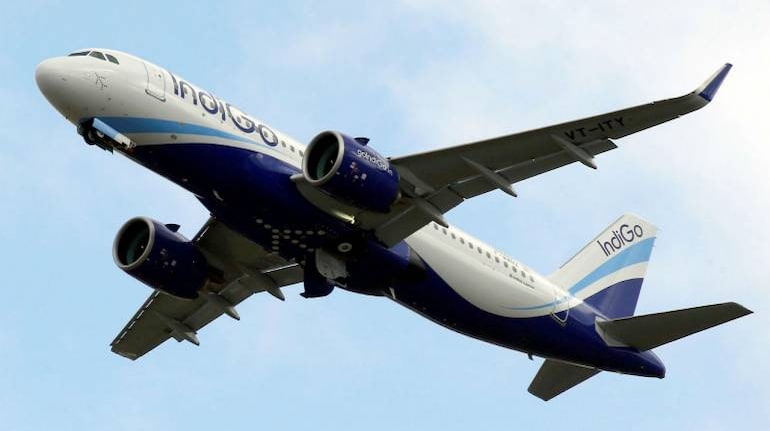



Every now and then when the discussion centres on the cap on capacity and the floor price, ceiling price on fares and other related aviation matters—hush, hush it may be—the fingers are always pointed at IndiGo. With a war chest of more than Rs 15,000 crore and an almost unending stream of new aircraft on the way, the airline can dominate the competition like never before.
Rivals are understandably bristling at the might of India’s largest airline. Over the years, IndiGo has built a formidable bank of flights from metros and built markets through a mix of nibbling into others’ routes and stimulating traffic with cheaper fares. So forceful is this strategy that passengers even move from other modes of transport to air.
In June, when the country was emerging of the COVID-19 second wave, all airlines together flew 790 unique routes in India, shows data shared by Caladrius Aero Consulting LLP, a boutique aerospace and defense consulting firm. Of this, IndiGo, the country’s largest carrier by fleet and domestic market share, operated on 531 routes. This was followed by Air India, which had operations on 265 routes. SpiceJet came a close third, operating flights on 262 routes.
On 194 of the 531 routes that IndiGo operates, the airline had an absolute monopoly. That’s a staggering 36.5%. SpiceJet had monopoly operations on 26.7% of its routes while Air India had monopoly operations on only 21% of its routes.
Market leader on almost all routes!
IndiGo had 50% or more capacity share on 470 routes. That translates to 88.5%.
It is precisely this number that could worry the competition. When you have over 50% capacity share on routes, you typically get a pricing power like no other.
The capacity is typically split across the day, making you a preferred choice for customers since they have multiple options available for onward and return journeys. This ensures that customers can opt for return fares which sell at a slight discount over one-way fares.
Mixed presence
Since IndiGo inducted the ATR 72-600 aircraft, it has also jumped on the RCS-UDAN bandwagon and not kept it restricted to the turboprop fleet. A couple of routes by the airline are on the A320 family as well.
The airline has its presence marked out well. Up to 21 routes out of Bengaluru were monopoly routes in June, 17 from Hyderabad, 15 from Chennai and 11 from Kolkata. While competition rushed to be present at places where there was traffic, IndiGo’s routes kept the connection going for many of the city pairs in the country.
On Delhi-Leh, where IndiGo launched services in June, the airline saw a 6.87% capacity share. Between Mumbai and Aurangabad the share was 9.56% as the airline stayed away for most days of the month.
How are the main routes doing?
Between Mumbai and Delhi, traditionally the busiest route in the country, IndiGo had 43.25% capacity share. Air India follows with 22.3%. GoAir and SpiceJet had 11% each while Vistara had 10%. On the Delhi-Bengaluru route, IndiGo had a capacity share of 54.63%, followed by Air India at 17% and SpiceJet at 13%. Vistara and GoAir (now GoFirst) had 6% and 4%, respectively.
Mumbai-Bengaluru was even more skewed with IndiGo controlling 58% capacity while Air India had 13% and SpiceJet 11%.
On routes like Delhi-Chennai, Mumbai-Chennai, Mumbai-Kolkata, Delhi-Hyderabad and Mumbai-Hyderabad, IndiGo had capacity share exceeding 60%.
Balanced routes
There are quite a few sectors in the country that see a balanced distribution of capacity. On routes such as Delhi-Pune, IndiGo had a capacity share of 44% while those of Air India, Vistara, Go Air and SpiceJet stood at 18.4%, 12.4%, 11.4% and 11.3%, respectively.
Worry for governments, airports and competition?
Whenever there is monopoly, questions are raised on a few counts. Will an airline become anti-consumer? Will it become a behemoth that will be difficult to control?
Aviation is not the only industry where a single player has more than 50% market share. Maruti Suzuki has the same in passenger vehicles and similar questions have never been raised. As long as the market remains competitive such questions are best avoided.
However, as was the case with Jet Airways at Mumbai or Delhi, any dependence on one player can lead to serious consequences when that player is down and out. IndiGo may nowhere be close to that but past learnings should be a good case for the future.
Tail Note
IndiGo was not born with a golden spoon or paradropped with a fleet of 250+ aircraft. It has worked its way upwards.
But with a market share of 50%+, the airline has immense ability to influence the market. A case in point being that of Kolkata-Agartala sector which had seen very low fares until Spicejet vacated the market. The fares skyrocketed afterwards.
This is not an isolated case but in a free market economy, this is how competition fights!
With two airlines looking to raise cash and the national carrier up for privatisation, IndiGo could see an unhindered run for the next few quarters, if not the next few years.
Discover the latest Business News, Sensex, and Nifty updates. Obtain Personal Finance insights, tax queries, and expert opinions on Moneycontrol or download the Moneycontrol App to stay updated!